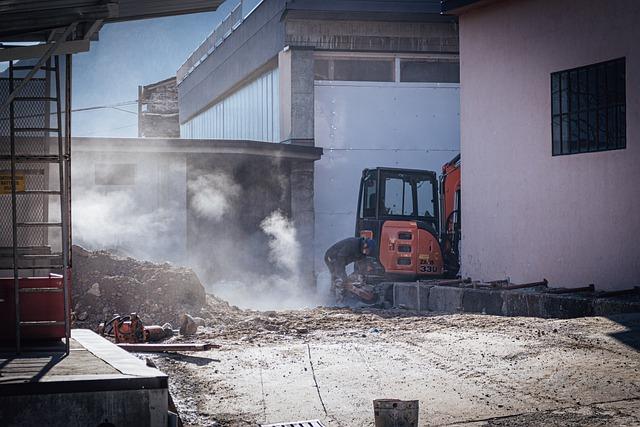
Foundation Requirements for Adding a Second Story

Homeowners often contemplate adding a second story for various reasons, including the need for more rooms, optimizing limited land space, or enhancing property value. This consideration becomes particularly pertinent for new owners looking to tailor their living spaces or high-income earners seeking specialized rooms like gyms or libraries. The advantage lies not just in spatial expansion but also in avoiding the cost and effort of laying a new foundation. This transformative architectural decision allows homeowners to personalize their homes, creating a functional and aesthetically pleasing environment that meets their evolving needs.
The Major Types of Foundations
There are two major types of foundations; houses are usually built using either shallow or deep foundations. It’s important you know the one your house is built on.
-
Shallow Foundation
They are about 1.5 meters deep into the soil and are relatively cheap to lay. The load they carry is not transferred into the deep part of the ground, unlike the deep foundation. Examples are the raft foundation, trench foundation, and strip foundation.
-
Deep Foundation
This type of foundation is made to reach deep into the soil where the inner layer of the soil is far better than the top layer. It is mostly used for high rising buildings and buildings intended to bear a lot of weight.
Areas that have unsuitable soil use this type of foundation. Examples are the drilled shafts and pile foundations. This is a better option for story buildings.
Adding a Story

The practice of adding a story on an existing building isn’t new and has been thriving mainly in cities that have small landmass but overwhelming populations. It can be a safe procedure if carried out properly under the supervision of a structural engineer. However, a thorough and practical knowledge of the requirements is needed.
A valid concern in the heart of homeowners who wish to carry out this construction on their buildings is if the foundation of their buildings will be able to support an additional story. It’s normal to get skeptical about the foundation of an old building bearing the weight of a story.
This article will give you a comprehensive list of requirements for your foundation to bear another story. Before then, listed below are the importance of having a strong foundation for your building.
Importance of a Strong Foundation
It Provides Stability
Building foundations, akin to a sturdy rock, provide the indispensable stability for structures. Whether supporting modest homes or towering skyscrapers, these silent pillars bear and distribute the building’s weight, ensuring resilience and preventing subsidence into the soil. Foundations stand as the unseen guardians of architectural longevity and structural integrity.
It Holds the Structure Upright
The foundation of a building serves as the bedrock that upholds its integrity for decades. Demanding substantial resources, this essential element ensures a building stands upright, eliminating the looming threat of collapse. The robust foundation becomes the cornerstone of structural endurance, providing assurance against the passage of time and safeguarding the longevity of the built environment.
A Defense against Natural Disasters
Natural disasters, inevitable in our world, pose threats that buildings must withstand. The foundation, a building’s anchor, becomes the guardian during floods, earthquakes, and powerful winds. This resilient structure not only keeps the building standing but is specifically designed to resist the forces of nature. The robust concrete slab acts as a fortress, absorbing shocks and ensuring stability even in the face of adversity. In essence, the foundation transforms a building into a stronghold, fortifying it against the unpredictable forces that nature may unleash.
It Keeps Moisture Away
It’s normal for water to gather at the base of your building after rainfall. And for buildings whose walls are fully or partially made from wood, a solid concrete foundation keeps water away. However, a sturdy foundation should be built alongside proper drainage that will channel out excess water.
Foundation Requirements for Adding a Second Story
With the knowledge of the importance of a solid foundation, you will be able to appreciate more the requirements prescribed for adding a second story to your building. They’re listed below.

Get an Approval from Relevant Government Authorities
The journey to add a second story to an existing building commences with a critical requirement – securing approval from the town planning agency. This initial step proves both foundational and complex, as not all agencies readily endorse such structural expansions. Some agencies delve into scrutinizing the existing foundation’s solidity, emphasizing the importance of structural integrity. Moreover, the approval process may involve periodic project supervision to ensure adherence to government-prescribed standards.
Potential Repercussions of Bypassing Approval: Bypassing government approval can lead to severe consequences, including property demolitions and legal actions. Beyond concerns about structural integrity, government authorities may also evaluate whether the proposed addition aligns with the overall development plan for the town or region.
Benefits of Government Approval: Securing government approval is not just a regulatory hurdle; it serves as a safeguard against unnecessary stress and project interruptions. Moreover, it aligns the building plan with official guidelines, fostering a harmonious coexistence with the government’s vision for the town or region.
In the realm of building expansions, government approval stands as a crucial and non-negotiable prerequisite. Beyond regulatory compliance, it ensures structural soundness, aligns with regional development plans, and shields homeowners from potential legal consequences, setting a secure foundation for a successful project.
Get a Compatible Design
The Design Challenges of Adding a Second Story
Introduction: After obtaining the essential building permit, the next critical step in the journey of adding a second story involves consulting a structural engineer. This professional plays a pivotal role in crafting a suitable design that seamlessly integrates with the existing structure, factoring in pillars, staircases, and foundation modifications.
Design Considerations: The engineer’s design must meticulously consider the installation of pillars and staircases, necessitating modifications to the foundation. It’s imperative to account for the additional load the new story will bear, determining the type of roofing and the intended use of the rooms upstairs. Solidification of the foundation becomes a crucial element in ensuring it can comfortably support the increased weight.
Expert Advice and Project Viability: The structural engineer, in the course of designing the new story, offers valuable insights. They may advise on the project’s feasibility, weighing the cost against the usefulness of the additional story. In some cases, they might recommend rebuilding the structure entirely if deemed more practical.
Financial Realities: It’s crucial to acknowledge that projects of this nature can be financially demanding and may exceed initial estimates. Homeowners should be prepared for potential cost overruns, as the complexities of structural modifications and additions often entail unforeseen expenses.
Conclusion: Engaging a structural engineer is a strategic move in ensuring the success of a second-story addition. Their expertise not only navigates the intricate design considerations but also provides valuable insights into the viability and financial implications of the project, guiding homeowners through the complexities of structural enhancements.
Carry out a Soil Test
Decades may have passed since your last soil test during the initial construction of your home, and the present soil conditions might have evolved. Now, as you plan to add another story, it is imperative to enlist the expertise of a soil testing professional to assess the soil’s current stability and its capacity to support the intended additional weight.
Evolving Soil Conditions: Soil, a dynamic component, undergoes changes over time. What was suitable for your initial construction might have altered in its composition and bearing capacity. A thorough soil test becomes a critical step in ensuring the feasibility and safety of adding a second story to your existing structure.
Expert Evaluation for Structural Integrity: Calling in a soil testing expert allows for a comprehensive evaluation of the soil’s current state. This evaluation is crucial in determining whether the existing soil conditions can adequately withstand the additional load posed by the planned construction. The expert analysis guides decisions on necessary modifications to ensure structural integrity.
Preventing Structural Compromises: Ignoring soil testing risks compromising the structural stability of the entire building. Assessing the soil’s load-bearing capacity ensures that the foundation modifications align with the soil’s present condition, preventing potential settling, foundation failures, or other structural issues.
Soil testing emerges as a fundamental precautionary measure before embarking on a second-story addition. It provides essential insights into the current soil conditions, guiding necessary adjustments to ensure the stability and longevity of the planned construction.
Determine the State of the Foundation
The ambitious project of adding a second story, a meticulous examination of the existing foundation is paramount. Checking for cracks, rusting irons, and molds becomes a crucial step to assess the foundation’s integrity. Any irregularities discovered during this examination may signify a weakened foundation, demanding immediate attention before proceeding with the additional construction.
Indicators of Foundation Weakness: Cracks, rusting irons, or molds serve as potential red flags signaling foundation vulnerabilities. Such irregularities are indicative of structural stress and may compromise the foundation’s ability to support the intended load of an additional story.
Foundation Repair Considerations: If weaknesses are detected, prompt foundation repair becomes imperative. Strengthening the foundation ensures it can bear the increased weight and withstand the structural demands of a second story. In severe cases, where the foundation is beyond repair, the option of erecting a new building may need to be considered.
Discarding or Reinforcing: The severity of foundation issues dictates the course of action. If repairable, strengthening the foundation is a viable solution. However, in cases of irreparable damage, the idea of discarding the foundation and constructing anew must be contemplated to ensure the structural soundness of the entire building.
Thorough checks for foundation weaknesses are non-negotiable before embarking on a second-story addition. Identifying and addressing these issues early on ensures the structural integrity of the foundation, safeguarding the success and safety of the ambitious construction project.
Grout the Soil
To further strengthen the foundation, the soil around the foundation can be grouted by injecting concrete into the ground. This will help solidify the soil around it.
Repair the Foundation of Your Building
As awkward as it may sound, you must carry out repairs on your building’s foundation. Check the footings and increase their width and thickness to standard. If the foundation has been flooded with water, it should be drained, as water may cause the irons to rust faster. Additional piers, footings, and beams should be added where required.
Factors to Consider Before Carrying Out this Project

Cost
This kind of project requires a lot of expertise. Its financial implication may be overwhelming and may not be a match for the result. House owners willing to undertake this conversion on their building must be ready to bear unforeseen expenses. The cost of erecting a new house may also be compared to the intended expenses of re-strengthening an already existing foundation.
Temporal Residence
During this procedure, the occupants of the house will be required to relocate temporarily to a new house. Issues about the foundations of a building are not done in a hurry. It may take time to get it ready.
Availability of Experts
This procedure must be carried out only by qualified personnel. The availability of such personnel may be scarce or not within reach at the desired moment. It’s best to put the project on hold till you can get an expert.
Conclusion
Adding a second story to your building is a routine decision, often undertaken to expand living spaces without compromising the existing structure’s standard. This commonplace choice follows established procedures and requires thoughtful consideration based on personal study and conviction. Despite initial apprehensions, this project can be approached with confidence, ensuring both functionality and aesthetics are enhanced while preserving the integrity of the original structure. Making an informed decision and adhering to established procedures are key to the success of this standard-enhancing endeavor.








